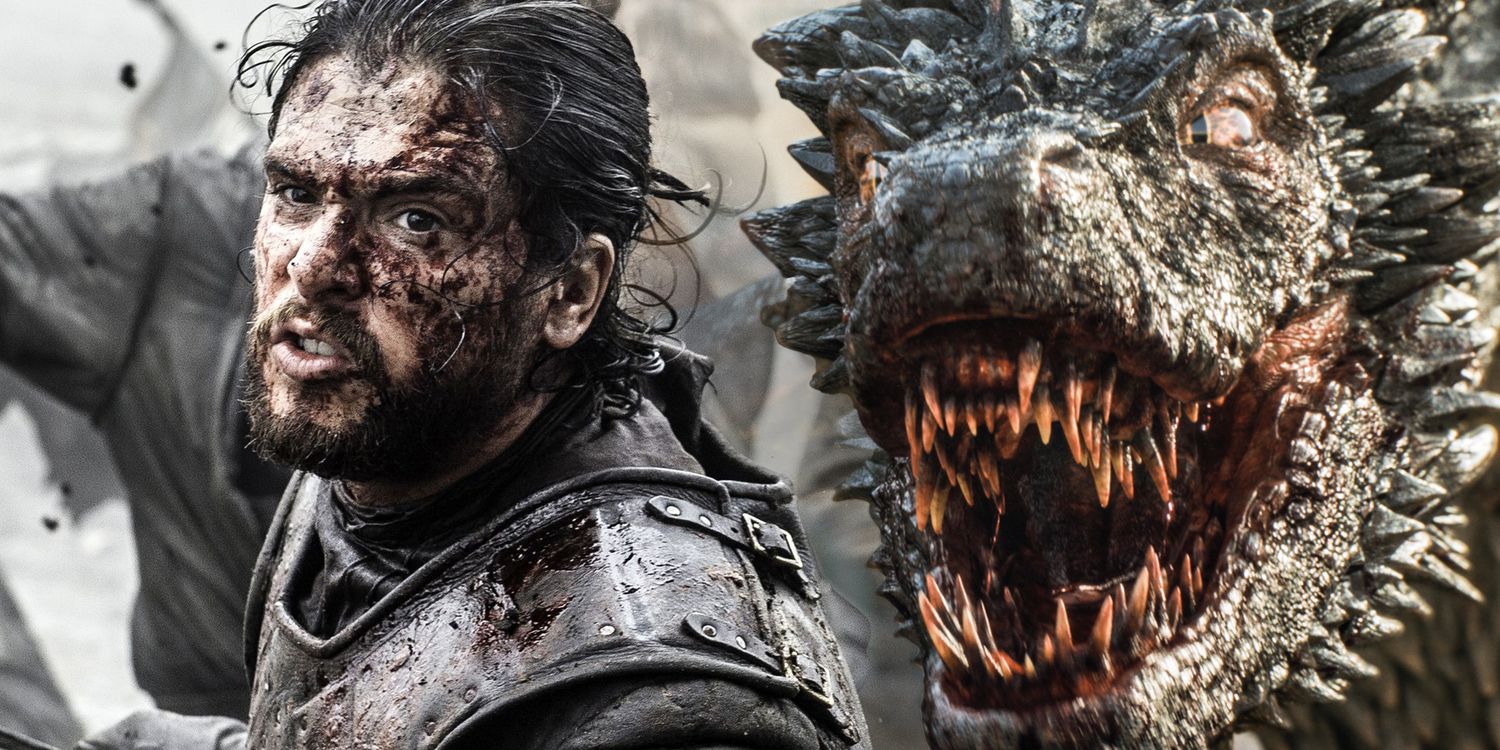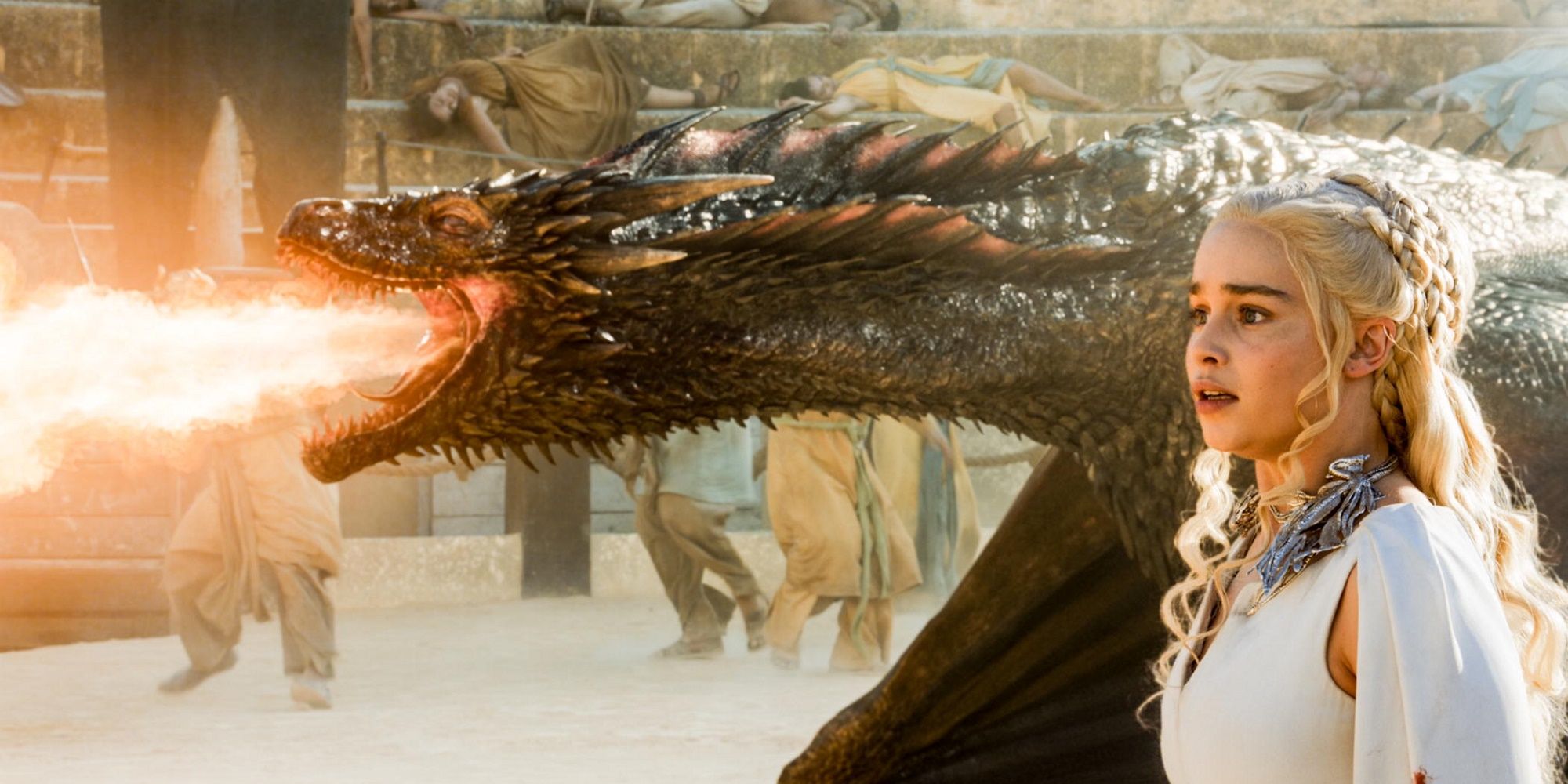The spectacle of Game of Thrones wouldn't be possible without the coordinated efforts of a legion of actors, writers, filmmakers, and, of course, George R.R. Martin. But that's saying nothing of the incredible time and artistry put into each season by the visual effects experts who bring the series' increasingly important fantastical elements to life. These artists work to generate a seamless integration of everything from amazing snow-packed vistas to armies of undead White Walkers to Daenerys' ever-growing dragons in a way that is both awe inspiring and believable.
It is that last element that will likely have many fans' undivided attention, as the last time anyone saw Dany and her three dragons they were embarking on a journey across the sea to Westeros where some serious conflict undoubtedly awaits. And given that the marketing for Game of Thrones season 7 is already playing up the naturally antagonistic combo of fire and ice, it's expected that Viserion, Rhaegal, and especially Drogon will all play a significant role in the series' final 13 episodes. That role is made all the more challenging by virtue of the fact that all three are generaget in postproduction by the animators at digital effects studio Rhythm & Hues.
Screen Rant recently spoke with Rhythm & Hues visual effects supervisor Derek Spears, who has not only worked on Game of Thrones, The Walking Dead, and Black Sails but also has credits on X-Men: Days of Future Past, R.I.P.D., Superman Returns, and Daredevil. We asked Spears about what level of digital effects viewers could expect in season 7, and whether recent statements about the size of Drogon, Rhaegal, and Viserion were true. While Spears wasn't at liberty to divulge the creatures' allegedly enlarged wingspans, he did say it was reasonable to expect Dany's dragons weren't done growing.
"I can't really give you any information about season 7. HBO is, of course, very sensitive to these things, but you can look at the progression from the previous seasons and things get bigger and more visually complex. And as each season moves along I would expect to see some of the things grow. So, the spectacle always gets bigger and bigger and bigger… if you look at what's happened from season 5 to season 6 the dragon grew larger."
As the dragons increase in size with each season, it alters the way they interact with actors like Emilia Clarke and the way in which they fill physical space within the frame. That presents a challenge to the visual effects team, but it is one Spears and the others at Rhythm & Hues have been able to adjust to with each season.
"The challenges we saw from season 5 to season 6 was that you have to sell a scale and as things get larger so does their movement and you have to scale with that. So what might have been a smaller dragon in season 5 might have a particular flap cycle and particular cadence. The way it carries itself in flight would be different than what we did in season 6 – which was a larger dragon with a different cadence, a different flight angle, and different roll rate. So all of these things have to be accounted for in scale. Even how we fit Dany on its back changed from season 5 to season 6 because the placement was different, how we attached her was different. So in the context of what we did then, that's kind of how you have to deal with those challenges."
Over the course of six seasons, the dragons have evolved from fire-roasted hatchlings to monstrous beasts capable of incinerating an entire armada at sea. But the key to creating digital creatures goes far beyond making them physically imposing; they need to stand out as individuals and for the audience to connect with them in a way that's not too far removed from how they would any other performer. According to Spears, that's a big part of what the studio aims for when bringing the creatures to life.
"It's true of all creatures and characters that we do: you try to establish a personality for everything you're animating, otherwise it just becomes rote and repetitive. On season 6, the big difference was the gap between Drogon and the smaller ones who had been kept in captivity. You'll see back when [Rhaegal and Viserion] break out, there's a frenetic element about them, they're just finding freedom. It's almost as if they are younger at that point than Drogon, who is much larger, grander, and more regal. So, that's kind of what we played with during that season. And every animator approaches a similar problem: you have to think about the personality of the character you're animating, be it a dragon or a person, or some other creature. It is just like an actor, there has to be a motivation, there has to be a personality, otherwise you come off and it falls very flat."
After HBO asked fans and reporters to watch fire melt a block of containing the premiere date of the penultimate season, Game of Thrones season 7 has already had a significant run-in with spectacle. It's a good bet that, having handled the effects on two of Game of Thrones' biggest dragon-centric hours – 'The Dance of Dragons' and 'Battle of the Bastards' – the effects team at Rhythm & Hues is ready to deliver a far more exhilarating spectacle for those watching.
Next: Game of Thrones Showrunners Confirm 6-Episode Season 8
Game of Thrones season 7 premieres Sunday, July 16 @9pm on HBO.



